Gallery: Let Your Children Play With Robots
By Tim Carmody October 26, 2010 | Categories: R&D and Inventions
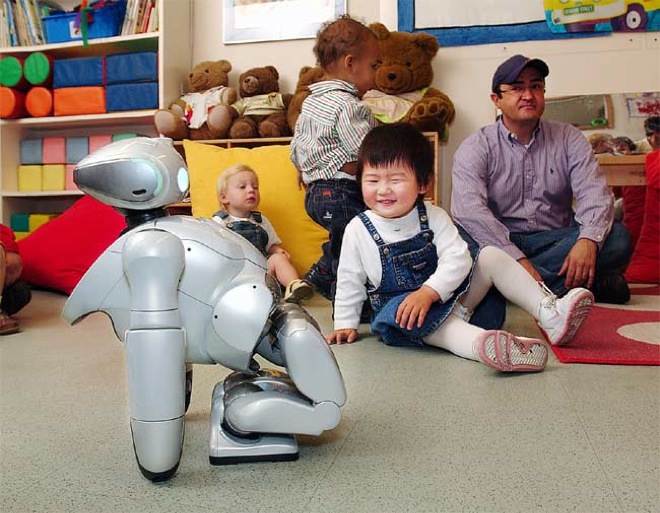
Robots can help children become smarter and happier. Javier Movellan, who has spent the better part of the last three decades playing with kids and robots, is sure of it.
Movellan, an associate professor affiliated with UC San Diego's Machine Perception Laboratory, is a psychologist and a robotics researcher. He studies children's interactions with robots for two reasons: to better understand childhood development and to build better robots. He has found that emotion and interactivity are more important to kids than humanoid appearance or abstract intelligence. Movellan answered Wired.com's questions about his work by e-mail.
Image: Javier Movellan with Qrio Robot at UCSD's Early Childhood Education Center. Credit: UCSD Machine Perception Lab.
Rubi Project at UC-San Diego from Tim on Vimeo. |
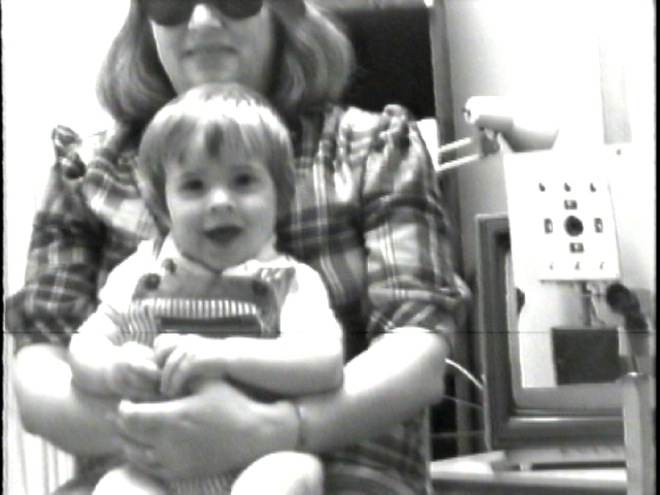
Wired: What can we learn about children and childhood development by observing kids interacting with robots?
Javier Movellan: Robots allow us to rigorously test theories of social development. For example, in 1987, John Watson and I published the results of an experiment where we put 10-month-old infants in front of a robot that did not look particularly human, kind of like R2-D2. If the robot responded to the infants, after a few minutes, they treated the robot as if it were human. They vocalized to it, they followed its "line of regard."
This helped us realize that looks are not as important as responsiveness for infants to identify conspecifics [individuals of the same species]. A few days ago, Andy Meltzoff's group published a followup study showing that if the robot was responsive to a third person, the children treated it as if it were human.
Image: This still is from Movellan and Watson's 1987 experiment following eyeline and vocalization response of an infant to a noise-making interactive robot.

Movellan: We also learn from infants how to build better robots. For example, Nicholas Butko and I recently analyzed mathematically the pattern of vocalizations and pauses that infants used in my 1987 experiment to discover whether the robot was responsive. We found the optimal solution to this problem and showed that the pattern used by infants was very close to optimal.
We then put this solution into a robot and found that the algorithm was very effective even in very noisy real-life conditions. We actually patented the algorithm. I bring up the patent issue not to show off, but to illustrate that understanding what infants do from a computational point of view can have a business value, not just a scientific value.
Image: The CB2 (Child-robot with Biomimetic Body, or CB Square) is slowly developing social skills by interacting with humans and watching their facial expressions. It evaluates and "clusters" expressions into basic categories, such as happiness and sadness. Credit: AFP PHOTO / Yoshikazu Tsuno
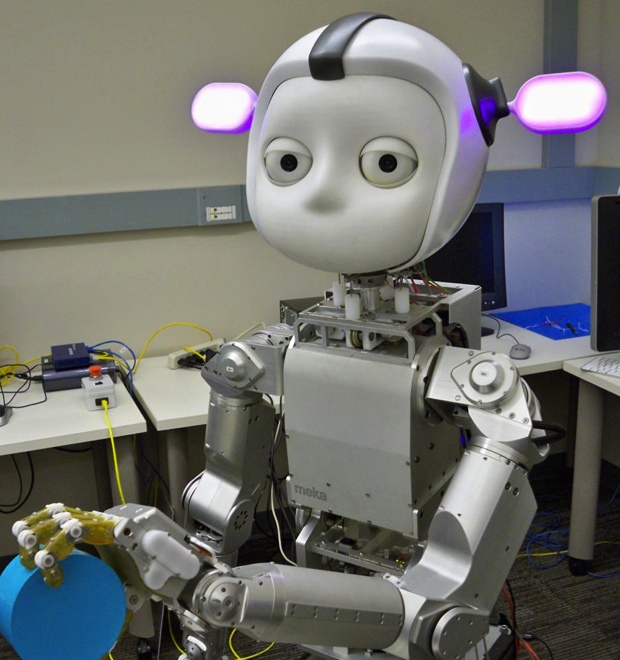
Wired: What else can we learn about artificial intelligence by watching robots interact with children (rather than adults, animals or other AIs)?
Movellan: So far, much of my work on human-robot interaction has been with pre-verbal children, 12 to 18 months old. It's a challenge, because at this age, you can only minimally use language. But this age also forces us to focus on aspects of the human-robot interaction that I think are critical: They help us find more basic, non-verbal ways to communicate. They help us focus on key affective issues that eventually make the communication between robot and human deeper and more social.
I work on robots because they offer a wonderful opportunity to help us understand how humans are put together. We need to understand what love means and how to synthesize it in robots. We need to understand what intelligence means and put together robots that approximate human intelligence.
Image: Meka Robotics' Simon is a learning robot developed by researchers at Georgia Tech's Socially Intelligent Machines Labs. Credit: Georgia Tech.
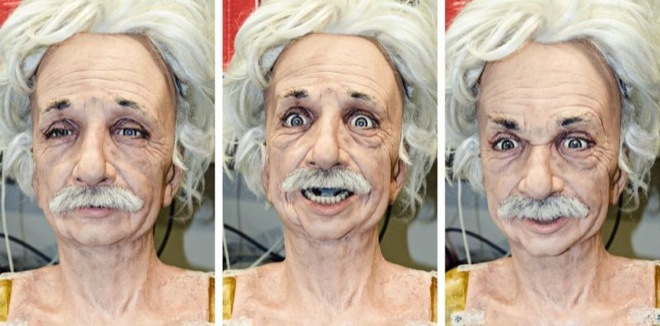
Movellan: To give you an example, we are now working on a robot named Diego-San whose mechanics approximate the level of complexity of the human body. Controlling it is very, very difficult and it is making us wonder how on earth infants learn to control their own bodies. We take it for granted, but we have no idea about how this is done. That's intelligence — much more complex intelligence than the intelligence expressed playing chess or proving mathematical theorems. Chess and math are easy.
By focusing on children, Walt Disney was very successful at making animated creatures that touched the human heart. Robots are really the 21st century version of the animation problem. It is a much more difficult problem than the problem that Disney faced, because we need to animate in real time and in response to the environment. However, we do have a lot to learn from Walt Disney.
Image: The Einstein Robot has been developed by Hanson Robotics at UCSD using Movellan's perception software. The robot can communicate and interact with humans, and has even learned how to make facial expressions in response to an emotion. Credit: UCSD Machine Perception Lab.
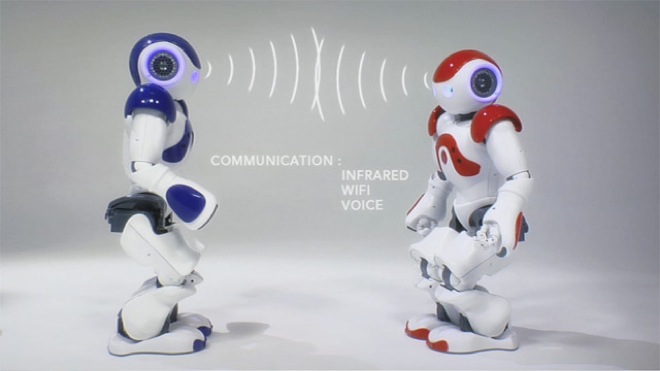
Wired: What can children's interactions with robots teach us about the nature of language, emotion and what it means to be human that we might not learn with other approaches?
Movellan: To tell you the truth, I'm very scared about language. It is just a very complex behavior that very smart linguists and psychologists have been trying to understand for many years with not much success. You can know you are in a room full of linguists because they are always raising their voices and calling each other "stupid."
This is why I've focused on the simpler communicative behaviors that you see in preverbal children. I'm also interested in parrots and how they learn to communicate and speak with humans. I am now typing this to you while Max G Movellan is on top of my monitor. He is an African grey baby parrot that I adopted and that I hope will teach us something about parrot behavior. You can follow his progress on Twitter.
African gray parrots are supposed to be particularly good at telling people's emotions. In addition, as Irene Pepperberg showed, they can use human speech to express their intentions, and their desires. I'm really intrigued about how they learn to do all these things. You'll laugh at me, but I think an important component is that they have to fall in love with you. If you see the examples of animal studies that have shown amazing progress communicating with humans, you can clearly see that the animals were in love with the humans that took care of them.
Image: Aldebaran's Nao is a humanoid robot designed specifically for scientific research and educational use. The Aliz-E program uses the Nao to work with small children in medical settings. Credit: Aldebaran Robotics.

Wired: What can children learn from robots? What's the benefit of robot-child interaction in an educational context?
Movellan: We really don't know. It took us four years of working with children, but in the end we put together some simple robot designs the children really liked. They just gave them another source of social/emotional interaction and another opportunity to learn and become better people.
For example, the robot would say "Excellent!" when the children answer a question correctly. We saw the children then telling themselves "Excellent!" when they did things. These robots were contributing, to a small but significant extent, to raise happier and smarter children.
The amazing part is that these were really simple robots you could put together with Home Depot parts and tools. Think of them as the Roombas of early education. The Roomba is by no means perfect. The surprising part is that it can do so well, given how simple it is. Same goes for the educational robots we are building.
Image: Hanson Robotics' interactive Zeno robot mid-assembly. Credit: Hanson Robotics.
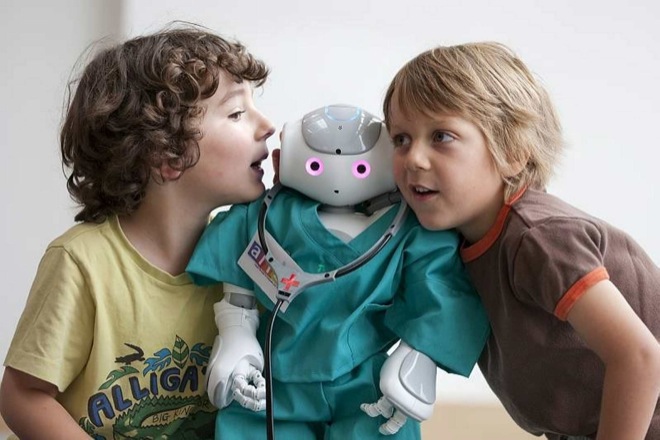
Wired: What other ways can robots help children (for example, in medical, therapeutic, service or other contexts)?
Movellan: Well, the Roomba is already helping my children keep a cleaner room. It is much easier to tell them "run the Roomba" than "clean up the room." The funny thing is that in order to run the Roomba they already have to tidy things up a bit. The end result is that their room is clean and organized.
I do think that affective/educational/entertainment robots for children will become part of daily life slowly but surely. We will not even realize that they did. It will be kind of like the internet. There are already more than 5 million Roombas around the world. I hope within a few years we get to 5 million educational robots.
Image: The Aliz-E program uses Aldebaran's Nao humanoid robot to work with children in hospitals and other medical settings. Credit: Aliz-E.
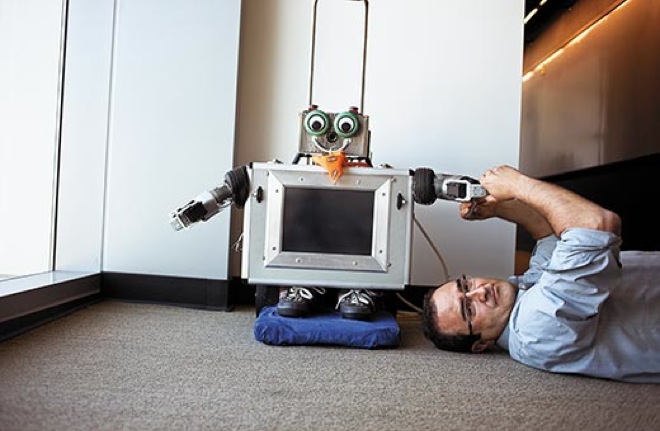
Wired: What challenges have you and other researchers had to overcome in pursuing this program?
Movellan: The main challenge is to liberate ourselves from the walls created by traditional scientific disciplines. We need people who can understand the mathematical intricacies of control theory, who know how to use a hammer, who understand electronics, who know how to program, who like to interact with children, who are not afraid to change diapers, who can spend hours observing videos of children, and who do not believe too much of what their professors tell them.
Image: Movellan works on the Rubi interactive robot in the UCSD Machine Perception Lab. Credit: Timothy Archibald, Smithsonian Magazine.
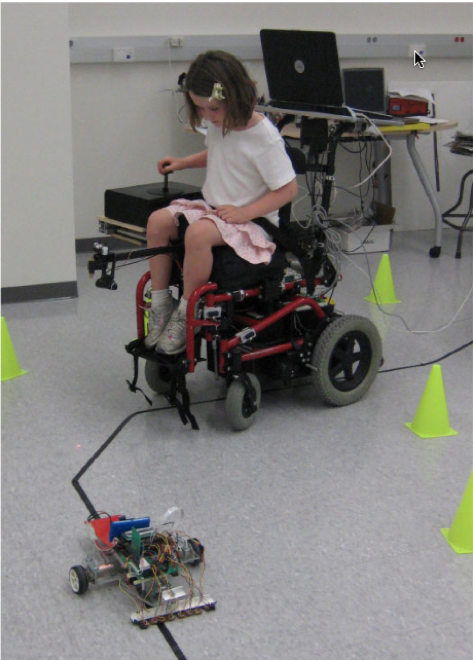
Wired: Are there some children who particularly benefit from interacting with particular kinds of robots, or who are especially revealing for your research — for example, children with special needs, toddlers or pre-adolescents?
Movellan: In our work, we are definitely finding that some children benefit more from the interaction with our robots than others. We are trying to understand why that's the case. We may have to tailor robots to specific individuals. Not unlike pets. Some children like hamsters, some children like cats, some like dogs.
Image: Robot-assisted Learning for young drivers (ROLY) helps children in powered wheelchairs learn how to use their devices to navigate. Credit: Marchal-Crespo et al., Journal of NeuroEngineering and Rehabilitation.
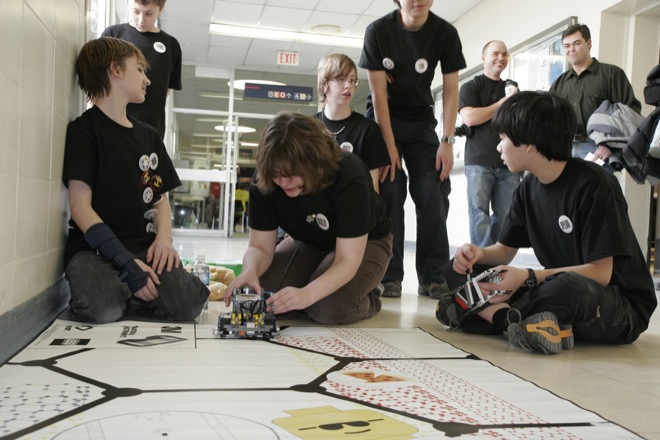
Wired: Why should parents let their children play with robots?
Movellan: That's easy. Parents will let their children play with robots when they see that these robots help their children become better people: stronger, smarter, happier, more sociable and more affective.
Robots must show that they take us in the right direction. It really is about the pursuit of happiness. The commitment to pursue happiness in American culture is the reason why the U.S. will end up making and selling better and more sociable robots than anybody else in the world.
Image: The Longhorn Robotics team from Alberta, CA in a regional competition at the First Lego League Nanoquest Challenge. The Longhorn team won the regional division and represented Alberta at the 2007 FLL World Festival in Atlanta. Credit: Grant Hutchinson at Flickr, used gratefully under a creative commons license.
